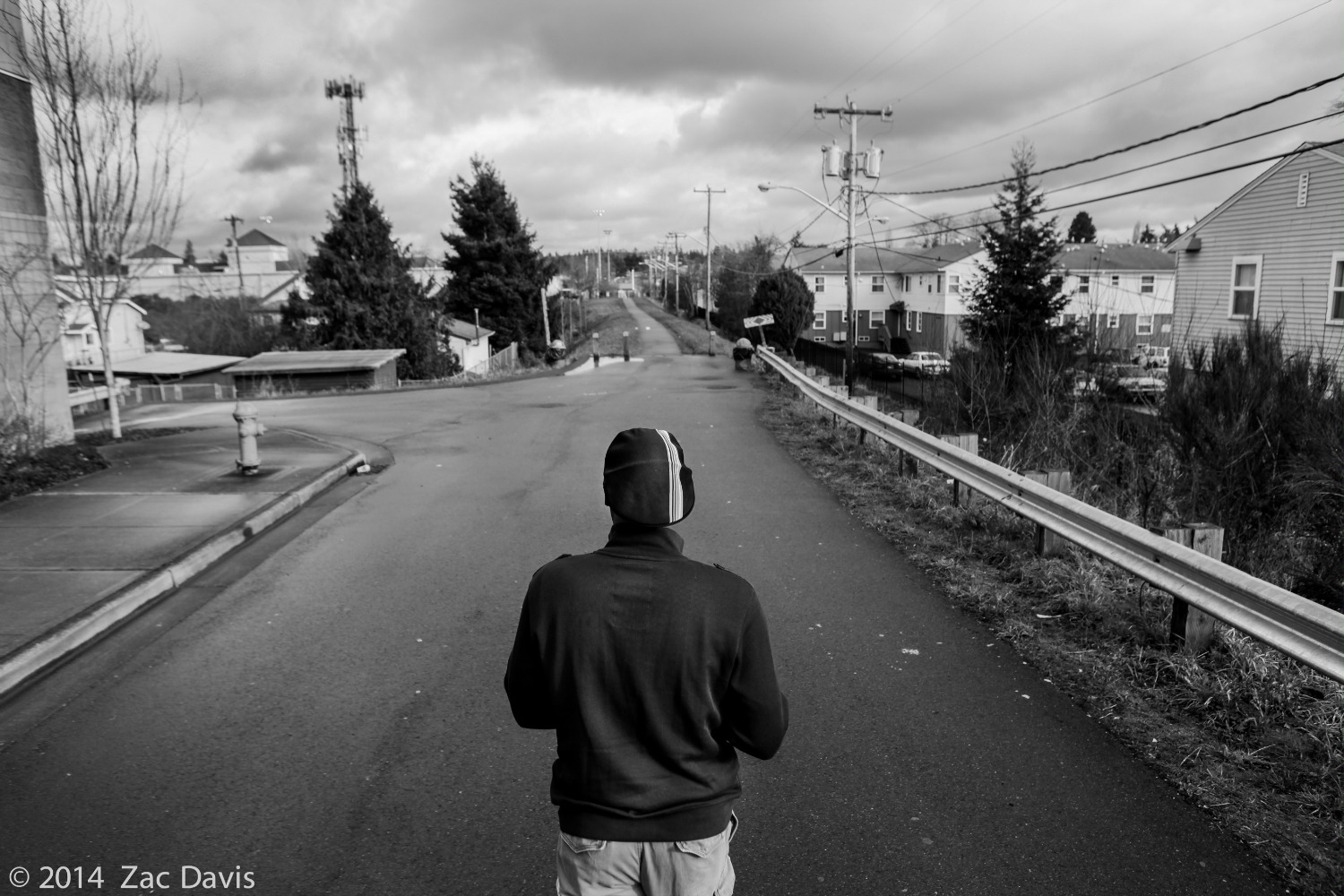As we continue moving through the season of Lent as a community, Sacred Space facilitator Amber Englund offers her reflections on the two art projects currently lining the hallways on the second and third floors of our building. Lent Threshold: Chaos & Beauty by Caleb Dodson and The Rainier Beach Project: Overcoming Displacement by Zac Davis will both be on display until the end of April.
Space is formative. It connects us to texture, sight, smell, and sound as we locate ourselves and form memories of our experiences. Space is sacred. As we slow down our minds to truly be with our bodily experience, we create space for encountering God. This pause allows us to register and reflect upon the symbols and images surrounding us. Space is revelatory. With growing awareness of our surroundings, God locates us within our created selves and, furthermore, within the created community. The face of Christ, the movement of the Spirit, and the glory of God become known in the essence and imagery that parallel and enhance the thoughts and speech of our day. It is this belief—that space holds formative value in the creation of our culture and the encounter with God and each other—that facilitates the curation of the art on our walls at The Seattle School.
In the past year, this curation has evolved to align its contents with the lifecycle of students, the themes of the school, and the broader liturgical calendar. As the rhythm of rotating the galleries has paralleled the current of the church calendar, the stories from artists have expanded beyond the creative process and medium of work to include a sacred journey. In fact, these conversations have become one of my favorite parts of working on Sacred Space. While sitting with these creative minds, I have had the opportunity to see narrative, creativity, and liturgy collide.
The current showcase for the season of Lent and Easter is no exception. Zac Davis (’07 MA in Counseling Psychology grad) and Caleb Dodson (second year MA in Theology & Culture student) began sharing their stories of photography and storytelling while on a journey and creative process that they could not escape. Although in different times and places, Caleb and Zac found God pursuing them on a Lenten journey. Caleb pursued fresh sight and resurrection on the island of Iona, and in places of literal death—such as the cemeteries of Scotland. There he found light through the lens of his camera. Zac found himself in the midst of a community of stories waiting to be told in the Rainier Valley neighborhood. And as much as he sought others to support the work—those who might have had more equipment to photograph and record—the stories chose him. They followed him like his own shadow until they were spoken. Zac provided a vehicle for this community to discover new light in untold stories breaking free.
While listening to the stories of these two men, I am reminded of Jonah. Both of them were continuously drawn back to suffer and create on behalf of a space and a story, along with a locatedness that spoke to formation and the revelation of God in themselves and their community. Gertrude Mueller Nelson writes of this unavoidable creative process to effect change in To Dance with God: “In the whale’s belly, Jonah learns to accept suffering and death in his own life and recognizes that he can’t avoid it. There he learns that he has to help others effect change. In fact, he can only effect change and influence others after having experienced ‘the dark night of the soul’ himself.” It is with this rhythm of reflection and storytelling that themes of Lent rise out of the creative work of Zac and Caleb.
As the stories of these bodies of work and their creative processes are shared, there is a sense of a sacred journey that has stretched the souls of these artists beyond the boundary of their personal abilities to acknowledge the suffering of Christ. Then—amidst hardship, yet not because of it—the resurrection of Christ is experienced. Light is seen in the spaces and faces of the collective community. It is in gratitude for these two creative spirits that I am reminded to slow down and take in the essence of this season, its impact on my formation, and the community around me in this sacred space.

